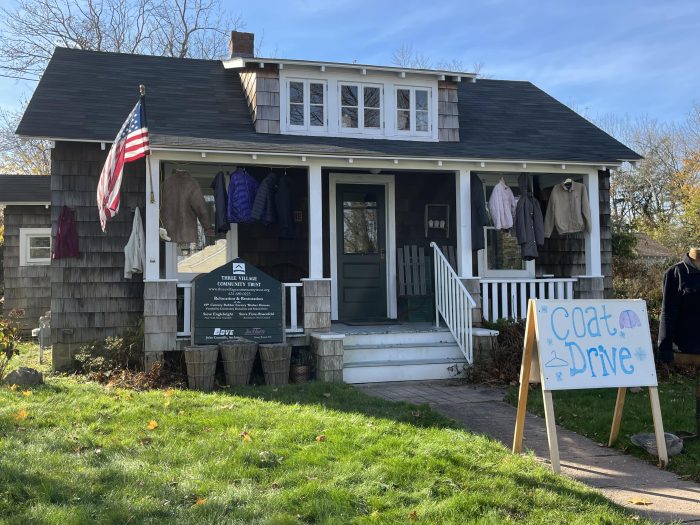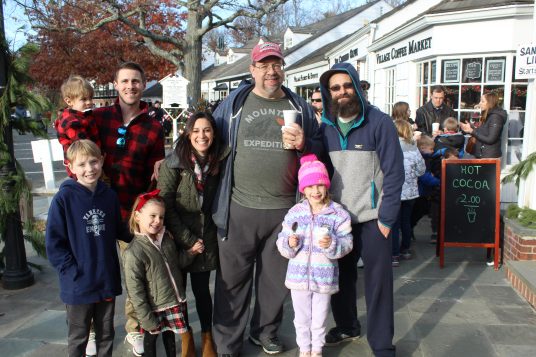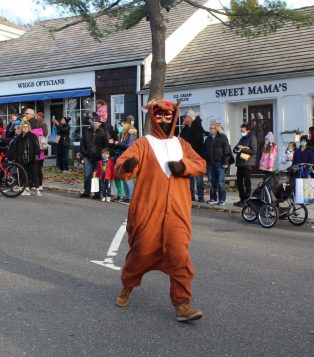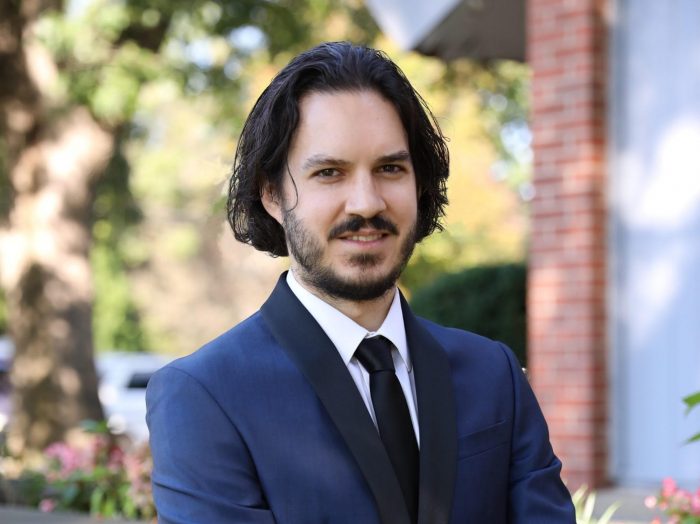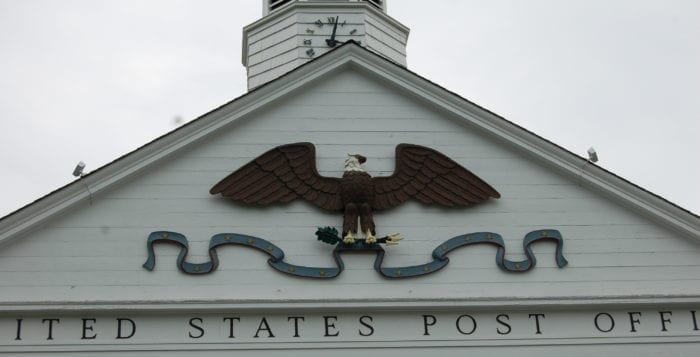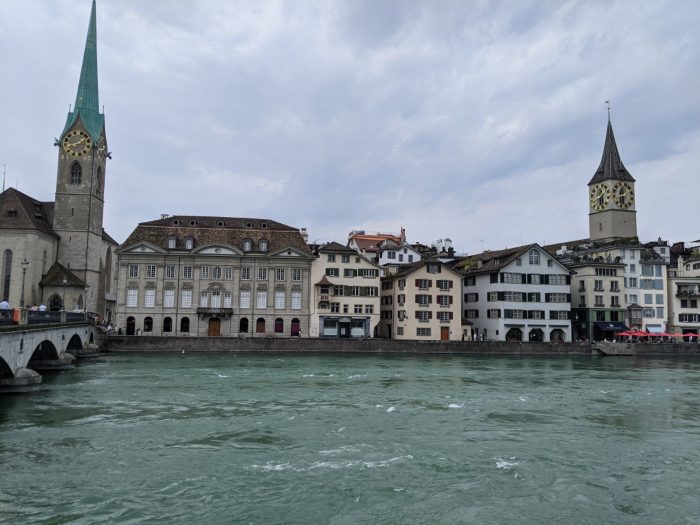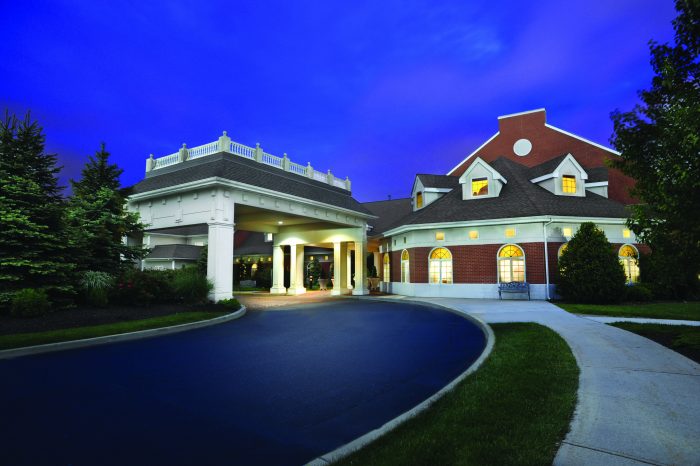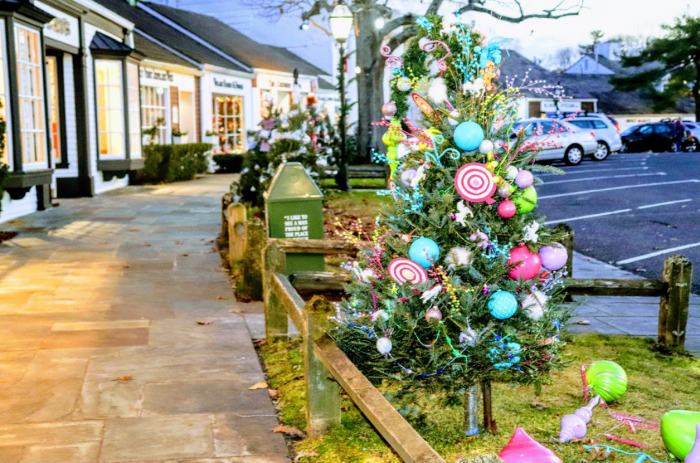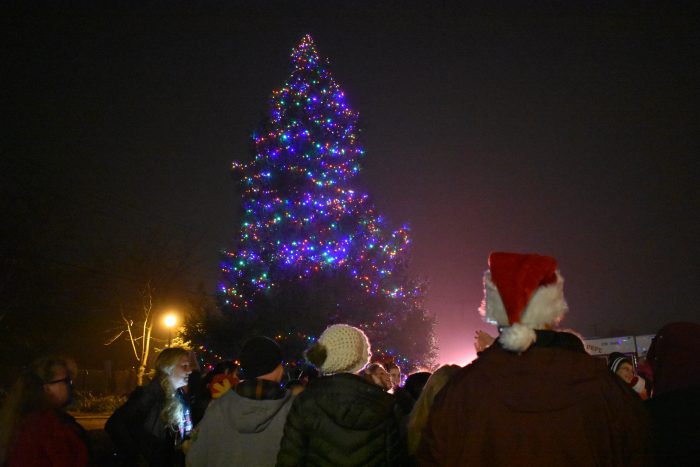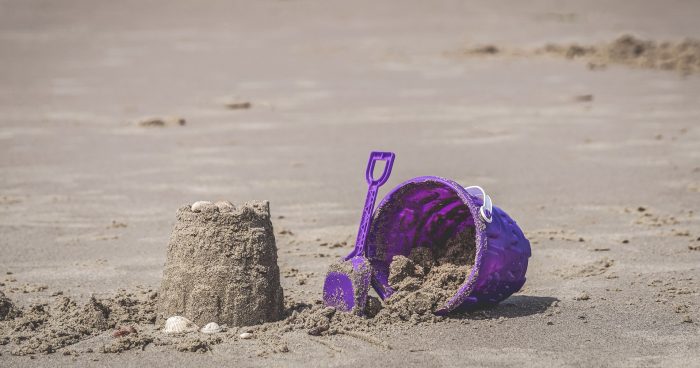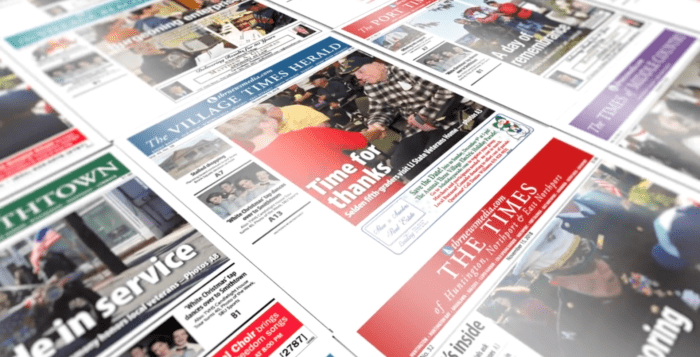Held with the support of the Three Village School District, the Three Village Community Trust’s first annual Winter Coat Drive is now underway through Dec. 16. This is a wonderful opportunity for residents to help those in need by dropping off a winter coat at the Trust’s headquarters at the Bruce House, 148 Main Street, Setauket. The Trust encourages community members to simply place their donation of clean winter coats on the front porch. Coats will then be delivered to local families. For more information, call 631-428-6851.
Stony Brook holiday favorite returns
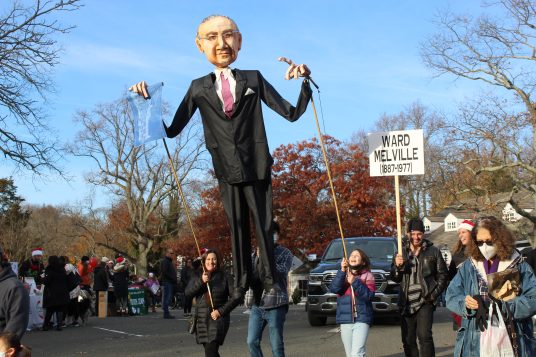
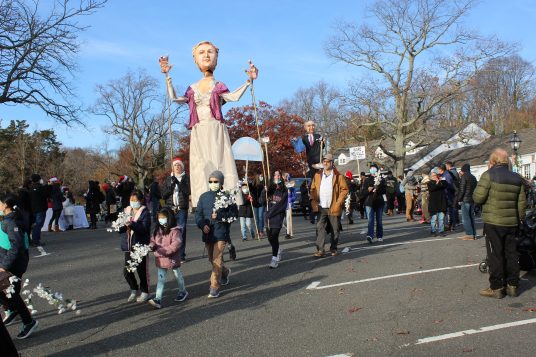
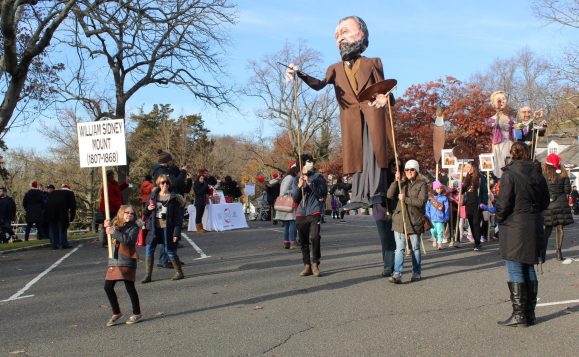
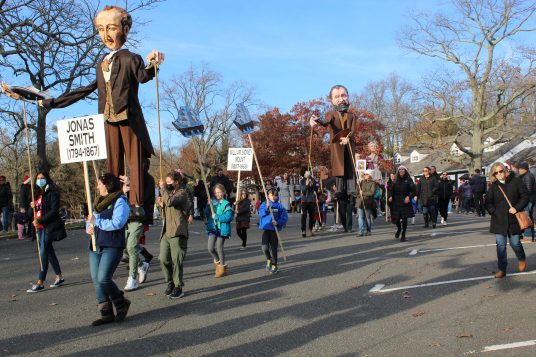
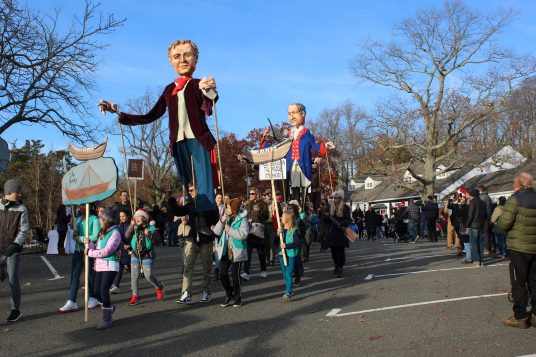
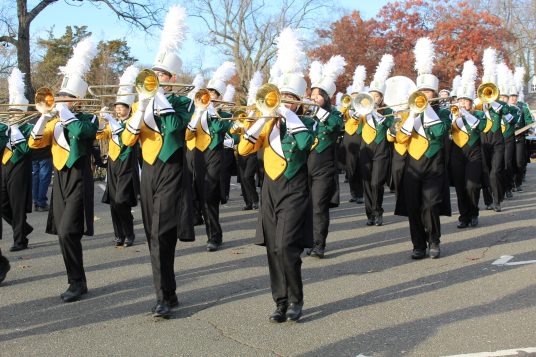
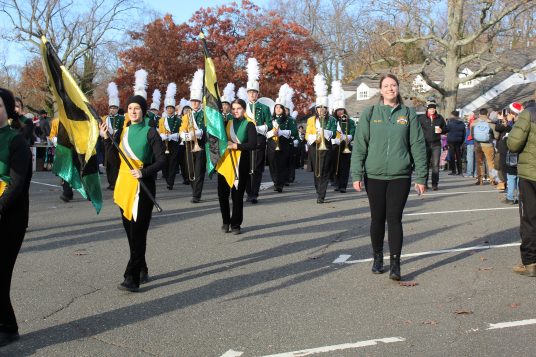
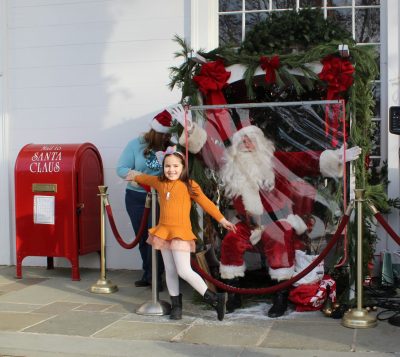

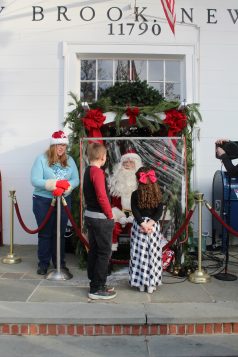
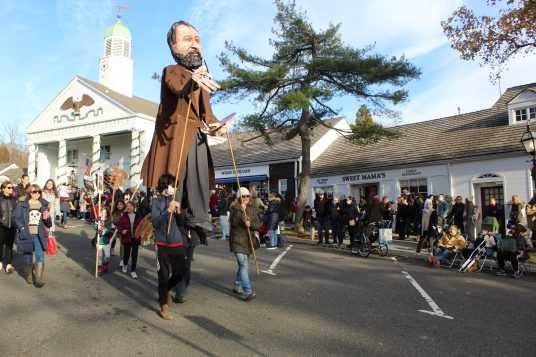
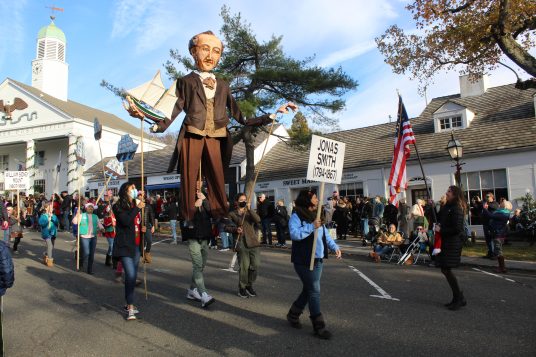
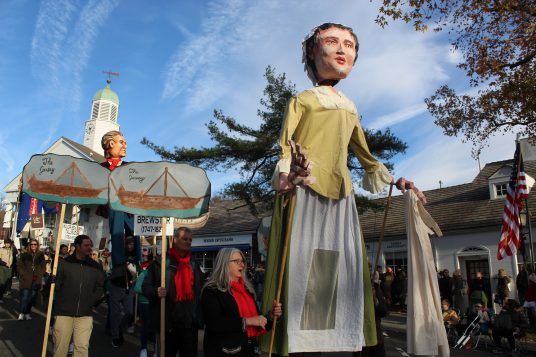
Hundreds filled Stony Brook Village Center Sunday, Dec. 5, for the return of some old favorites.
Last year The Ward Melville Heritage Organization’s Annual Holiday Festival had to be scaled back due to COVID-19 restrictions, and there were no visits with santa, parade and various activities. This year the event returned in full force for the 42nd year. From noon to 6 p.m., the shopping center was filled with activities including performances, music from WALK 97.5, a petting zoo and more.
Attendees were able to stop by Wiggs Opticians to see the holiday train display in the storefront window, and children could visit Santa sitting in front of the post office to take photos and tell him what they wanted this holiday season. This year, Santa sat behind a plexiglass shield to protect him from getting sick.
At 2:15 p.m., a parade led by the Ward Melville High School Band featured the annual Legends & Spies Puppet Procession that included the likenesses of former prominent Three Village residents such as Ward and Dorothy Melville, Anna Smith Strong and William Sidney Mount.
Later in the day, Santa got aboard a holiday float to begin the tree-lighting ceremony and cap off the night on a festive note.
Your Turn: LISCA holiday concert set for Dec. 11
By Martina Matkovic
The Long Island Symphonic Choral Association (LISCA) and Island Chamber Players present a holiday concert of music from the baroque period on Saturday, Dec. 11 at 8 p.m.
A lovely venue, the Three Village Church, 322 Main St., Setauket, will host this exciting program which features works by Bach, Charpentier and well-known selections from Handel’s Messiah. Eric Stewart, director and conductor of both groups, will take the baton.
Singers love to sing. The hiatus from that beloved activity imposed upon the members of the chorus has been a hardship for the performers as well as the audience. LISCA is back this holiday season, but reconfigured to chamber size for continued safety consideration.
This March, 2022 LISCA is planning and hoping to return to its’ full complement of singers for a seasonal concert.
On Dec. 11 the singers will be joined by the newly formed Island Chamber Players comprised of superb instrumentalists, including some from the graduate music program at Stony Brook University that have accompanied the chorus in past performances.
Proof of vaccination and mask-wearing by all quests and performers will be required as recommended by the CDC and American Choral Directors Association.
Tickets costs will be $20 for general admission and $15 for seniors, available at the door or at www.lisca.org. Students are free. Live streaming of the concert will be available at no fee at www.3vc.org/lisca2021. For further information, please call 631-751-2743.
WMHO presents Stony Brook ‘Winter Walks Through Time’
The Ward Melville Heritage Organization (WMHO) presents a new seasonal walking tour titled “Winter Walks Through Time” that will feature stories passed down through the ages and new interpretations of Stony Brook Village from indigenous people to modern day marketing.
Participants in the walking tour will enjoy new stories about Stony Brook Village and its former residents. This includes the history of winter whaling on Long Island, how Dorothy Melville saved Christmas, the design of Stony Brook Village by Ward Melville and Richard Haviland Smyth, and the history and magic of holiday window displays.
Tours will leave from the Stony Brook Post Office at 129 Main Street on Friday, Dec. 10 at 10:50 a.m. and 2:50 p.m. Tickets for this event are $15 per person, and includes hot chocolate from Stony Brook Chocolate. Reservations are required by calling the Ward Melville Heritage Organization at 631-751-2244.
Traveling on the edge of a pandemic: Part Two
Taking a solo backpacking tour through Europe proves the scars of COVID-19 are deep
This is part two of a two part series.
The Netherlands and Denmark
In Amsterdam, the classic Bulldog hostel, just one part of the company known for its pervasive marijuana products, was practically full to the brim compared to other hostels along my route. And still, people kept to their little groups, barely interacting with each other even in the spacious bar area. Rosie, a young woman I met in Amsterdam and fellow American traveler from Detroit, talked of her own lonely experiences after she left friends in Istanbul, Turkey, to travel up to Dutch country.
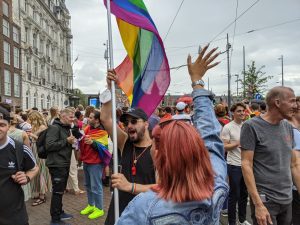
There are ways to mitigate the loneliness. Apps like CouchSurfing have the capacity for travelers to create hangouts. It’s how I managed to meet a group of international travelers all shut together in a tiny apartment in Amsterdam’s canal district for a house party/barbecue, where alcohol and marijuana loosened enough tongues to break through the concerns of pandemic life. Though that’s easier for young people, many of whom crowded along the rain-slick streets just outside the Amsterdam Centraal train station for a slimmed down version of Pride month festivities. None were wearing masks.
There are certainly places that seem to be trying to capture more of what prepandemic life was like. In Amsterdam and Denmark, masks are only worn in places where one can’t stay 1.5 meters away from people. Of course, it’s a policy that is rarely if ever enforced, despite COVID cases peaking to a new high for the Netherlands in mid-July. Despite what Dutch officials have recently said about limiting international travelers who come to revel in the famous smoke-filled streets of the city center, the travelers there are undaunted.
Switzerland
The international travel industry grew to new heights up until just before the pandemic, but now many towns, cities and countries are starting to consider whether the general wealth that tourists bring to their homes is worth what they lose in a sense of place and community. The outdoor shopping malls of a city like Bern, Switzerland, are no longer flooded with travelers, and more locals can take the time to walk past the old town and up the hill to the Bern Rosengarten to enjoy a beer and the cool afternoon air with friends and family.
While in Switzerland I stayed with a native Swiss man named Pascal for two nights in his home, just a 20-minute train ride from Zurich. That city, so well known throughout the world as a tourist hotspot, no longer sees the crowds it once did. The surrounding mountains are trekked by locals, with more mountain goats than people. The way Pascal kindly greeted his fellows on the slopes of the Etzel mountain, located on the southern end of Lake Zurich, it seemed that a strong sense of polite community was still alive, and better exemplified away from the international crowds of a national center like Geneva or in the resort town of Zermatt, lingering under the craggy gaze of the Matterhorn.

Iceland and back home
On the final leg of my trip into Iceland, I reconnected with my brother. It was the first time I met somebody I knew in seven weeks. We didn’t rent a car and were forced to take guided tours, one running down the brilliant length of the country’s south coast. The other was a tour of the Golden Circle to massive sites around the center of the country. We were the only two people in a van with our tour guide. The other people scheduled for the tour bailed last minute and, instead of canceling, the tour operator still offered us our ride. The pandemic had been hard on tour guides. They are making less than 50% what they had been doing just two years ago. Iceland’s economy, and so many other countries in Europe, relies on tourism. In 2019, over 15% of the workforce in Iceland was in the tourism industry. Many European countries accounted for close to 10% of their total gross domestic product. Some countries, like Greece, accounted for about 20% of their GDP. What will they do if travelers do not show up at the rates they once did in the years to come?
These are big questions and impossible for one person to answer. Instead, as time moves on and the memories start to congeal in my brain, I’m left with an impression: Thousands of people laying under verdigris-covered statues built in a time centuries before, the uncertainty, the questions, sitting amid millions of lives trying to be lived day-to-day, wanting to see a future in which all can take one collective breath.
And like us back in the States, we’re still wanting and we’re still waiting.
Kyle Barr is a freelancer writer and the former editor of The Port Times Record, The Village Beacon Record and The Times of Middle Country.
Part one: Reflections on Jefferson’s Ferry’s 20th anniversary
Part one of three
Over its 20 years in existence, Jefferson’s Ferry has been home to a significant number of accomplished and creative older adults who have been groundbreakers, innovators, educators and artists. All were original thinkers with a desire to do something that hadn’t been done before, and many of these residents wrote books about their work, which can be found in the Jefferson’s Ferry library collection.
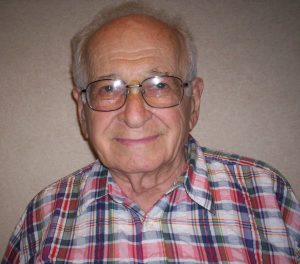
Gerhart Friedlander and Barbara Strongin: scientist and activist
Gerhart Friedlander and his wife, Barbara Strongin, were among the first residents of Jefferson’s Ferry when it opened in 2001. He was a nuclear chemist who emigrated to the United States in 1936 from Munich, Germany, when the Nazis forbade Jews from attending university. Friedlander studied at the University of California, Berkeley, receiving his doctorate in 1942. After gaining American citizenship in 1943, he was recruited to work on the Manhattan Project at Los Alamos, New Mexico. He later worked at Brookhaven National Laboratory for more than 30 years, conducting groundbreaking research on how high-energy particles trigger nuclear reactions. Friedlander also co-authored the textbook “Nuclear and Radiochemistry,” considered a classic in its field, with Manhattan Project colleague Joseph W. Kennedy. The book has been translated into 18 languages, and over the years, was updated twice with other co-authors. He received honorary degrees from many universities and countries and was an active elected member of the National Academy of Sciences.
Friedlander died in 2009 at the age of 93.
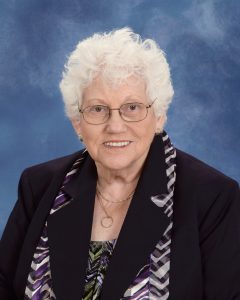
Strongin has spent her adult life dedicated to improving the lives of women and girls on Long Island. She met her husband when he was the chair of the board and she was the chief executive officer of Planned Parenthood of Suffolk County. They both received the Family Planning Advocates of New York State award. One of three founding members of the Women’s Fund of Long Island, Strongin was also an adviser and contributor to the Herstory Writers Workshop. She has co-authored curricula and articles on the Jewish perspective of human sexuality and has been honored by the New York Civil Liberties Union (Suffolk County Chapter) and Family Planning Advocates of New York State. Also, she won in 2011 the Good Neighbor award from The Village Times Herald.
Strongin and Friedlander jointly received the Allard K. Lowenstein Memorial Award from the American Jewish Congress, Long Island Chapter, and were recognized by Newsday as “Long Islanders of the Century: Everyday Heroes.”
Strongin continues to reside in her independent living cottage at Jefferson’s Ferry.
Joyce Edward: author, advocate, activist
Joyce Edward enjoyed a long career as a respected and influential social worker psychoanalyst, teacher, writer and activist. The co-editor and co-author of several books showing the value of psychoanalytic theory in social work practice as well as in the analytic consulting room, she also authored a book on her own, “The Sibling Relationship.”
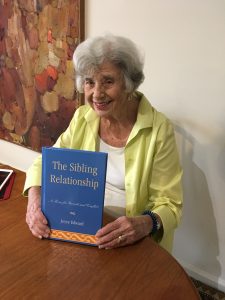
Edward holds a Master of Social Work from Case Western Reserve University and earned post-master’s certificates in psychoanalysis and psychotherapy.
“Therapists seek to help a patient understand what’s in their way, what’s keeping them from a congenial marriage, for example, or from exploring career options,” she said. “A therapist is a partner in the work. We do not tell you what to do but help identify what may be blocking you and what you can do for yourself to move past these obstacles.”
Edward attended Antioch College in Ohio, attracted by its then unusual work study program. With the intention of becoming an advertising copywriter, Edward was placed in a salesclerk position at Macy’s as part of her work experience. She was uncomfortable in the post and quickly realigned her course, gravitating toward social work after helping Southerners who were recruited to come to work in a bomber plant up North find housing during World War II. At home she was exposed to acts of kindness, generosity and caring for those less fortunate.
“My aunt, who was a social worker during the Depression, would say of the people she helped, ‘They are just people like us.’ At Antioch, there was an emphasis on helping others. For example, as students we helped integrate a barbershop and the local movie theater.”
Edward did not intend being a practicing analyst. Balancing motherhood and career, she first volunteered at a newly founded small private school for emotionally disturbed children. As the school grew, so did her role.
“It was a major and central working part of my life for 13 years and exposed me to psychoanalytic training,” she said. “As the social worker on the clinical team, I wanted more than a handmaiden role. I questioned the prevailing theory at the time that the cause of autism in children was ‘refrigerator parents’ who were cold and did not connect with their children. I saw the ‘coldness,’ when it was observed, as frequently being the result of living with an autistic child, whose needs are tremendous and time consuming. I realized that I had to get more training to gain prestige and acceptance of my ideas, so I enrolled in an analytic training course of study.”
Upon publishing an article on her thoughts and observations, Edward was asked to write a book on the subject. She wrote “Separation-Individuation” collaboratively with two colleagues, with each contributor writing several chapters. The book was well received and provided the basis for greater discussion and ideas about the developmental process that led to subsequent studies, articles and books.
After 13 years at the school, Edward took a position in the Freeport Public Schools in a program funded by Democratic President Lyndon Johnson’s “war on poverty.” When the funding for this program ceased, she opened a small private practice and continued with this until she retired. During these years she also taught in the schools of social work at Adelphi University, Hunter College and Smith College as well as in two analytic training programs.
With the introduction of managed care into the mental health system, Edward and her colleagues founded the National Coalition of Mental Health Professionals & Consumers. The organization sought to restore privacy and to return to the clinician treating a patient their decision-making role.
Edward has lived in an independent living apartment at Jefferson’s Ferry for more than 14 years. Over that time, she has served on the residents council and the health committee, the social activities committee, the education committee as well as others. Through Stony Brook University’s OLLI program, she enjoys courses via Zoom, which currently include a political discussion newsroom, a music course with essayist David Bouchier and a class on the work of Leonard Bernstein.
An avid reader, she participates in book club discussions, one at the Emma S. Clark Memorial Library and the other at Jefferson’s Ferry. Recent reads include “Hamnet” by Maggie O’Farrell, “White Teeth” by Zadie Smith and works by Edith Wharton, George Eliot, George Packer and Anne Applebaum.
According to Edward, the best thing about Jefferson’s Ferry is the people, the residents and the staff — there are many interesting, knowledgeable and accomplished people. “More importantly is the understanding and support that we offer each other,” she said. “The residents have an appreciation of each other gained through our ages and experiences and have come to recognize what’s important in life.”
Linda Kolakowski is vice president of Residential Life at Jefferson’s Ferry Life Plan Community in South Setauket.
Holiday Tree Competition returns to Stony Brook Village Center
On Sunday, Dec. 5, participants of the Ward Melville Heritage Organization’s (WMHO) Holiday Tree Competition will bring festive cheer to the Stony Brook Village Center, 111 Main St., Stony Brook and decorate 50 premium balsam trees that will line the open-air center’s walkways at the 42nd annual Holiday Festival.
One tree will be selected by votes from the public between Sunday, Dec. 5 and Monday, Dec. 20 to win a $150 gift certificate to Stony Brook Village and its establishments.
The decorated trees will remain in the village for viewing until Jan. 3.
Sponsors include Roosevelt Investments, Damianos Realty Group, GSE Dynamics, Central Semiconductor Corp and Armor Pest Control.
To learn more about the Holiday Tree Competition, call the WMHO office at 631-751-2244.
Holiday Tree Lightings on the North Shore this weekend
By Heidi Sutton
Enjoy caroling, treats, tree lightings, special visits from Santa, and more on the North Shore this weekend. Check next week’s TIMES … and dates for tree lightings taking place on Dec. 11 and 12.
Cold Spring Harbor
The Cold Spring Harbor Fish Hatchery, 1660 Route 25A, Cold Spring Harbor will host a tree lighting ceremony on Dec. 4 from 5 to 7 p.m. Santa Claus will light the hatchery’s Christmas Tree at 5:30 p.m. Free admission. Suggested donation of $10 per family. 516- 692-6768.
Greenlawn
The Greenlawn Civic Association hosts a will host a “Meet at the Tree” Christmas Tree Lighting on Dec. 4 at 3:30 p.m. at the Harborfields Public Library Front Circle. Join them for a celebration that includes holiday music, hot cocoa and treats, and a visit from Santa and Mrs. Claus with the Greenlawn Fire Department. A food/gift card drive will also take place to benefit HACO. www.greenlawncivic.org.
Kings Park
The Kings Park Chamber of Commerce hosts a Christmas Tree Lighting Ceremony at Veterans Plaza, King Park on Dec. 4 at 4:15 p.m. Enjoy holiday music selections followed by invocation and welcome remarks from the chamber with hot chocolate and cookies for all. 631-269-7678
Mount Sinai
Join the Heritage Trust and the Mount Sinai Fire Department for a Christmas Tree Lighting Ceremony at Heritage Park, 633 Mount Sinai-Coram Road, Mount Sinai on Dec. 5 at 5 p.m. Listen to carols, enjoy hot chocolate and visit with Santa. 631-509-0882.
St. James
The St. James Chamber of Commerce invites the community to a Christmas Tree Lighting at Deepwells Farm County Park, 2 Taylor Lane, St. James on Dec. 4 at 4:30 p.m. with holiday music, pictures with Santa, cookies and hot chocolate. 631-584-8510.
Stony Brook
The Ward Melville Heritage Organization hosts a Holiday Tree Lighting at the Stony Brook Village Center Green, 111 Main St., Stony Brook on Dec. 5 at 5:30 p.m. as part of the WMHO’s 42nd annual Holiday Festival. 631-751-2244.
Wading River
Join The Shoppes at East Wind, 5768 Route 25A, Wading River for a Holiday Tree Lighting on Dec. 4 from 3 to 7 p.m. Stop by to put a letter in Santa’s mailbox, enjoy music and dancing, and more holiday fun including holiday shopping at their Winter Fest. Santa arrives on a Fire Truck to light the tree and take free photo with families. Santa will also be at the Shoppes on Dec. 11 and 18 from 11 a.m to 5 p.m. 631-929-3500
D: None of the Above: A plea for solutions instead of more sand castle destroyers
By Daniel Dunaief

When she was little, my daughter loved to build sand castles. She’d put wet sand in a bucket, gently pull the bucket back and marvel at the details in the castles that came out.
My son wasn’t as interested in building castles. He derived special pleasure out of stomping on the castles she made. It wasn’t just that it gave him power over the sand: he also felt power over his older sister, who was furious with him for crushing her castles.
While I tried to reason with him, which is almost as effective today as it was when he was two, I came up with an alternative plan that required additional energy from me, but that created peace on the beach. I’d quickly put together a ring of 15 castles, grabbing wet sand and dumping it several feet from where my daughter was working on her creation.
Like a young Olympic sprinter, my son would race over to the collection of castles and stomp all over them, while my daughter slowly built her own city of sand.
These days, it seems, we are surrounded by people eager to stomp on everyone else’s sandcastles.
Sure, it’s satisfying to feel the figurative sand in our toes and to revel in tearing down what other people have created.
But, really, given all the challenges of the world, I think we should ask a few questions of all those people who are so eager to belittle, attack and undermine others. What’s your solution? What are you doing better? How would you fix the problem?
Insulting others for their efforts, their awkwardness or their perceived flaws often seems like a form of ladderism. No one wants to be on the bottom rung of a ladder, so people try to push others down or to shout to anyone who will listen about how much better they are than the people below them. That seems to be a sign of weakness or insecurity, reflecting the notion that other people are below them.
In addition to dumping on others, we live in a society of people for whom hearing views that differ from their own somehow turns them into victims. Surely we have more choices than simply, “I’m right and you’re wrong.” If someone doesn’t agree with you, maybe it’s worth finding out why.
Anger, frustration and hatred, while they may make us feel slightly better in the moment, aren’t solutions and they don’t improve our world. They are a form of destructive energy, like stomping on sand castles.
We should ask more of ourselves and from our leaders. I’m tired of hearing about politicians who will fight for me. I don’t want to send people into office to fight against others who are trying to do the best they can for the country. I want leaders who will learn, listen and, gasp, reach across the aisle in the search for solutions.
While platforms aren’t as sizzling as slogans or take downs, they include ideas and potential solutions.
Civility makes it possible for us to hear and learn.
We have enough threats to our lives without needing to turn against other people or to give in to the urge to crush other people’s sandcastles to feel better. We don’t all have to be best friends, but it’d be nice to look forward to a holiday season and the start of a new year that focused on a shared sense of purpose. We need better ideas, not better ways to attack.
Between You and Me: A big thank you to the federal government
By Leah S. Dunaief

Since we were thinking of all we are grateful for this Thanksgiving, I can now add one more item to the list. It seems that government officials have finally noticed how important newspapers and media, especially local news media, are, and they want to help us survive. In fact, attitudes on the part of media members toward government have also changed in the last couple of years, thanks strangely to the coronavirus pandemic.
The grim numbers tell the story. According to an article in this past Monday’s issue of The New York Times, there are now 200 counties in the United States without a newspaper. These are being referred to as newspaper deserts. More than 2100 have shut down since 2004. This is in part due to the rise in digital media that has broken the business model of advertising support for local newspapers, with the final blow delivered by COVID-19. According to the Pew Research Center, the number of journalists at newspapers fell to 31,000 last year from 71,000 in 2008.
At the same time, in order to stay afloat, many newspapers have accepted help from the federal government’s Paycheck Protection Program with forgivable loans, assuaging fears of publishers of an inherent conflict of interest in accepting federal help. After all, newspapers are considered the watchdogs of the powerful, including government, on behalf of the people. We have been leery of any quid pro quo by accepting government help until now. But there have been no restrictions or demands put on news gatherers in this program, proving that such support can work if properly administered, and those loans have doubtlessly saved the number of shuttered newspapers from being greater.
“I don’t think we’d be having this conversation [about government support for local media] if it were not for the impact of Covid and the role that it played in accelerating challenges the [news] sector has faced,” said Damian Radcliff, a professor at the University of Oregon School of Journalism and Communications in The Times.
A tax credit for local newspapers was one of the main items in the Local Journalism Sustainability Act, a bipartisan bill that appeared before Congress in 2020 and was reintroduced this year. Among its supporters was local U.S. Rep. Lee Zeldin (R-NY1). When it stalled, it was then put into the latest $2.2 trillion package, as a payroll tax credit, the giant bill having passed the House and now awaits its fate at the hands of the Senate.
Why should the government help newspapers?
For starters, there is early precedent in United States history. The Postal Act of 1792 gave newspapers significantly cheaper mail rates. The maxim about an informed public being the cornerstone of democracy still holds. A free press is enshrined in the First Amendment, and the way to help pay for it was, and still is, by reduced postage. To this day, newspapers that are so designated because they carry a significant percentage of news, as opposed to only advertising, move at the rate of first class mail.
As for local news that most directly affects everyday life, who but the local news outlets would routinely cover local school board, town board and civics meetings? It is in the local news where births, deaths. graduations and weddings are noted. Local student sports teams, student musicians and academic accomplishments are proudly published, as are local cultural events, exhibitions and fairs. In addition to holding local officials accountable, local newspapers define the boundaries of a community and strengthen its bonds.
Other ways that government can help news outlets include placing advertising from their various agencies. Such a program helped newspapers in New York City this past year for a total of some $10 million, at the behest of Mayor de Blasio. Although counties already advertise legal notices in newspapers, those are not usually equitably placed but rather are saved for the partisan papers by the party in control. A legislator in New Jersey suggested giving residents a $250 deduction on their taxes if they subscribed to a local news outlet.
I can tell you that were we to receive any sort of financial help from the government, it would go directly toward publishing more local news for you.


